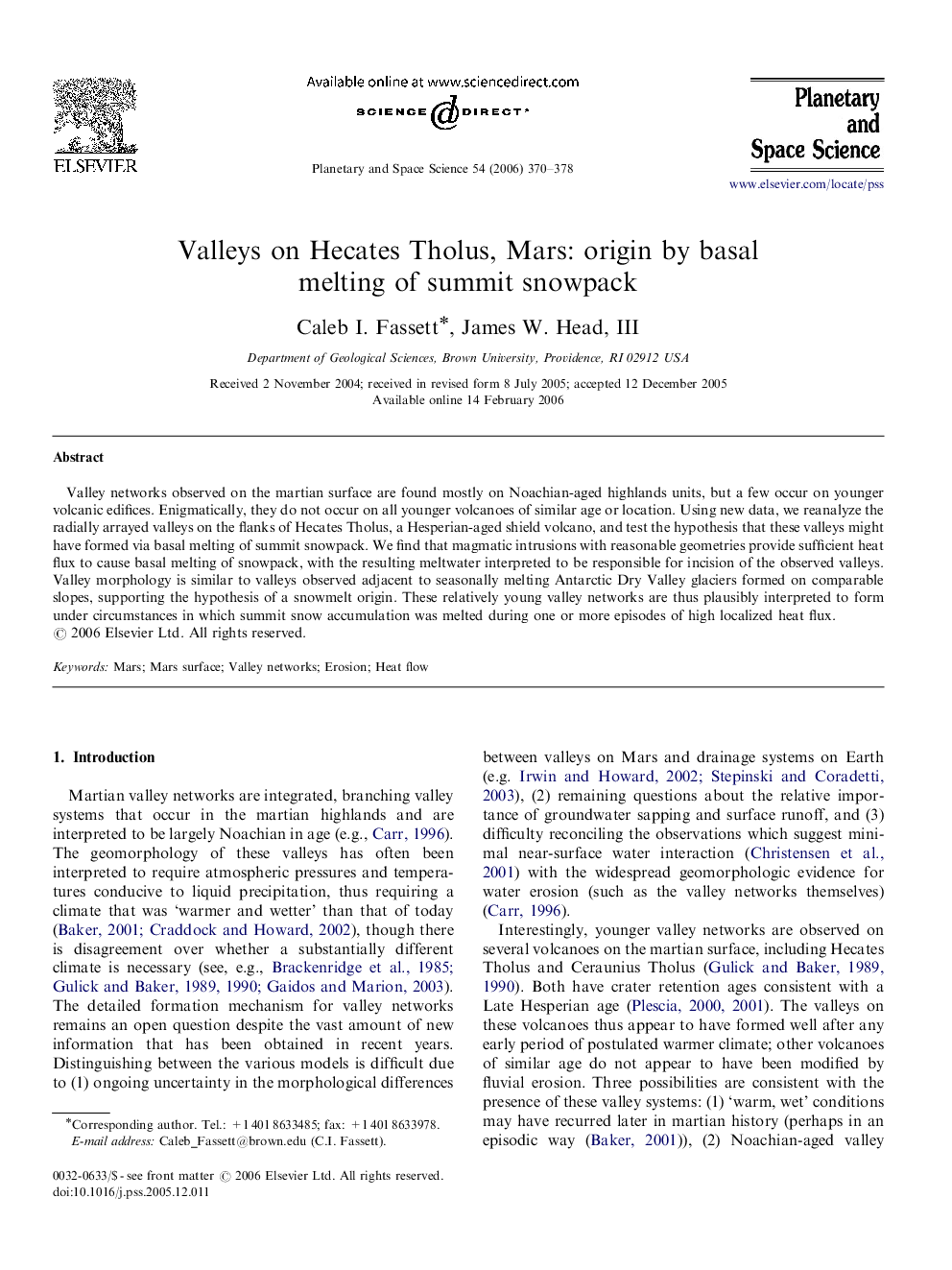| Article ID | Journal | Published Year | Pages | File Type |
|---|---|---|---|---|
| 1782829 | Planetary and Space Science | 2006 | 9 Pages |
Valley networks observed on the martian surface are found mostly on Noachian-aged highlands units, but a few occur on younger volcanic edifices. Enigmatically, they do not occur on all younger volcanoes of similar age or location. Using new data, we reanalyze the radially arrayed valleys on the flanks of Hecates Tholus, a Hesperian-aged shield volcano, and test the hypothesis that these valleys might have formed via basal melting of summit snowpack. We find that magmatic intrusions with reasonable geometries provide sufficient heat flux to cause basal melting of snowpack, with the resulting meltwater interpreted to be responsible for incision of the observed valleys. Valley morphology is similar to valleys observed adjacent to seasonally melting Antarctic Dry Valley glaciers formed on comparable slopes, supporting the hypothesis of a snowmelt origin. These relatively young valley networks are thus plausibly interpreted to form under circumstances in which summit snow accumulation was melted during one or more episodes of high localized heat flux.
